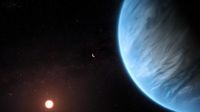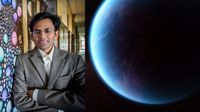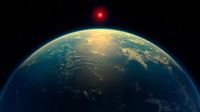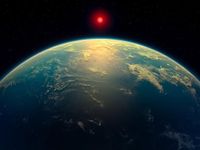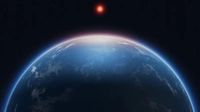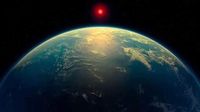In a groundbreaking development in the search for extraterrestrial life, British scientists from Cambridge University have discovered potential signs of life on the exoplanet K2-18b, located 124 light-years away. This discovery, made using data from NASA’s James Webb Space Telescope (JWST), has sent ripples of excitement through the scientific community, as it may indicate that life exists beyond Earth.
The research team, led by Professor Nikku Madhusudhan, identified molecules in the atmosphere of K2-18b that, on Earth, are produced exclusively by living organisms. Specifically, they detected dimethyl sulfide (DMS) and/or dimethyl disulfide (DMDS), gases that are associated with biological activity, primarily from marine phytoplankton. This finding marks the second time that chemical substances potentially indicating life have been detected in a planet's atmosphere using the JWST, with this instance being particularly promising.
Professor Madhusudhan expressed optimism about the implications of their findings. "This is the strongest evidence that there may be life there," he stated. "I can realistically say that we can confirm this signal within a year or two." The professor emphasized the importance of obtaining definitive proof, as the current conclusion about K2-18b's atmosphere holds a statistical accuracy of 99.7%. While this is a significant improvement from previous findings, which were met with skepticism, it still falls short of the 99.9999% certainty required for a scientific discovery.
K2-18b is classified as a sub-Neptune, being about 2.6 times larger than Earth and possessing a hydrogen-rich atmosphere. The planet orbits a red dwarf star, K2-18, every 33 days, and is believed to have a warm ocean that could harbor life. This is not the first time K2-18b has garnered attention; initial studies in 2019 detected water vapor in its atmosphere, followed by the identification of carbon dioxide and methane in 2023.
Dr. Subir Sarkar, a lecturer in astrophysics at Cardiff University and a member of the research team, noted that while the presence of DMS is exciting, it is essential to remain cautious. "We don’t know for sure if it’s a biosignature," he said. The team is working to rule out non-biological processes that could produce these gases, as the debate surrounding the origin of the detected molecules continues.
Despite the excitement, the scientific community remains divided. Some experts argue that DMS can be produced through non-biological means, and caution against jumping to conclusions about the presence of life on K2-18b. Professor Catherine Heymans, Astronomer Royal of Scotland, highlighted that even with the current data, it remains uncertain whether the detected gases have a biological origin or if they are the result of geological processes.
The Cambridge team is keen to conduct further observations with the JWST to strengthen their findings. "We estimate that the amount of this gas in the atmosphere is thousands of times greater than on Earth. If the connection with life is real, then this planet will be teeming with life," Professor Madhusudhan said, underscoring the potential significance of their discovery.
As scientists continue to analyze the atmosphere of K2-18b, they are also exploring the possibility of other planets in the universe that could support life. The implications of confirming life on K2-18b would be monumental, suggesting that life may be more common in the galaxy than previously thought. "If there is one example, and the universe is infinite, then there is a chance that life exists on many other planets," Madhusudhan pointed out.
Furthermore, the findings have reignited discussions surrounding the Fermi Paradox, which questions why, given the vastness of the universe, we have not yet encountered evidence of extraterrestrial life. The detection of DMS adds a new layer to this ongoing debate, as it provides a tangible clue in the search for life beyond our solar system.
In conclusion, while the discovery of potential biosignatures on K2-18b is still in its early stages, it represents a significant step forward in our understanding of the universe and the possibilities for life beyond Earth. The scientific community eagerly awaits further data from ongoing observations, which may ultimately help answer one of humanity's most profound questions: are we alone in the universe?
